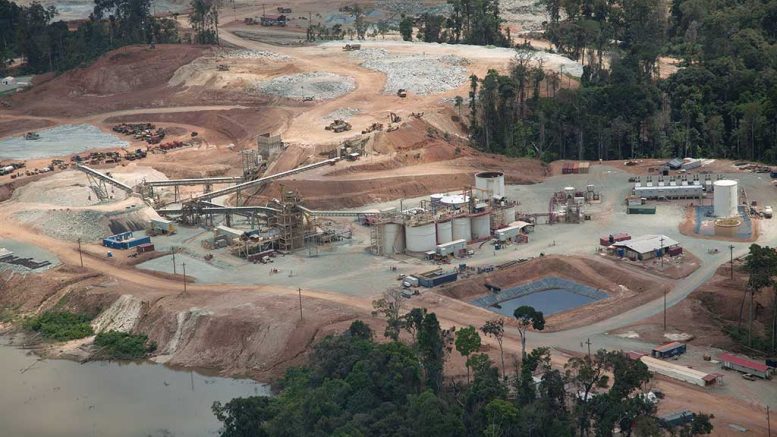Guyana Goldfields (TSX: GUY) lightened its debt load just before the new year.
Guyana Goldfields, which operates the Aurora gold mine in Guyana, has refinanced its US$160-million debt facility dated Sep. 2, 2014, with a group of existing lenders, comprising ING Capital LLC, the Bank of Nova Scotia and Export Development Canada.
The facility amounts to US$80 million with 16 quarterly repayments of US$5 million over four years, starting at the end of March 2017.
The restructuring bolsters Guyana’s financial flexibility, as the lenders will remove several covenants and restrictions, including unlocking US$23.2 million of restricted funds in the overrun equity account, eliminating cash sweeps and lowering the interest rate by 1.3%.
Scott Caldwell, the company’s president and CEO, called the refinancing a “key milestone” in balance sheet management. It improves Guyana’s cost profile and growth potential.
The Toronto-based producer expects to incur a one-time, non-cash charge of US$8 million to expense deferred financing costs in the fourth quarter. This should negatively affect that quarter’s earnings per share without affecting cash flow.
Over the term of the new facility, Guyana anticipates annual cost savings of US$4.5 million per year.
The previous debt is part of the project loan facility that Guyana secured in late 2014 to build its flagship Aurora mine, which achieved commercial production in January 2016. The loan consisted of two tranches: a tranche 1 facility of US$160 million and a tranche 2 cost-overrun facility of US$25 million. Tranche 1 had a weighted average interest rate of three-month London interbank offered rate, plus 5.11%. Tranche 2 expired in late 2015 due to unwithdrawn funds.
Guyana started debt principal repayments on Dec. 31, 2015. Through to the third quarter of 2016, it repaid US$24.4 million and was set to provide another US$8 million by year-end, BMO analyst Andrew Breichmanas notes.
Earlier in 2016, Guyana closed a $144.1-million bought-deal financing to fund a mill expansion at Aurora, increase exploration and potentially lower the debt level. Guyana’s management also said it would renegotiate the project loan, Breichmanas says.
The facility has helped Guyana do just that. The company lowered its debt 50% to US$80 million over 2016. It anticipates a US$64-million cash balance.
At the end of September 2016, the company reported US$135.7 million in debt, plus US$105.2 million in cash and US$23.3 million in restricted cash.
“The anticipated cash balance of US$64 million suggests that operations may have generated less free flow cash than our fourth-quarter 2016 estimate of US$10.8 million, potentially as a result of higher-than-expected capital expenses on the mining fleet and working capital additions,” Breichmanas points out.
In 2016, Guyana would have released the updated feasibility study for the mill expansion at Aurora. Guyana plans to take the mill from 5,000 tonnes per day to 8,000 tonnes per day in 2017.
It also intends to update Aurora’s ore reserves at a higher gold price and complete a preliminary economic assessment for Sulphur Rose, envisioned as a stand-alone operation, near the Aurora mine.
On Dec. 22, Guyana gained 10% to close at $5.19 per share, after dipping the earlier day on the restructuring news. The stock exited 2016 at $6.12, up 99% from its 2015 close of $3.08.
Breichmanas has a “market perform” rating and $6.50 price target on stock.


Be the first to comment on "Guyana Goldfields restructures debt to boost financial flexibility"